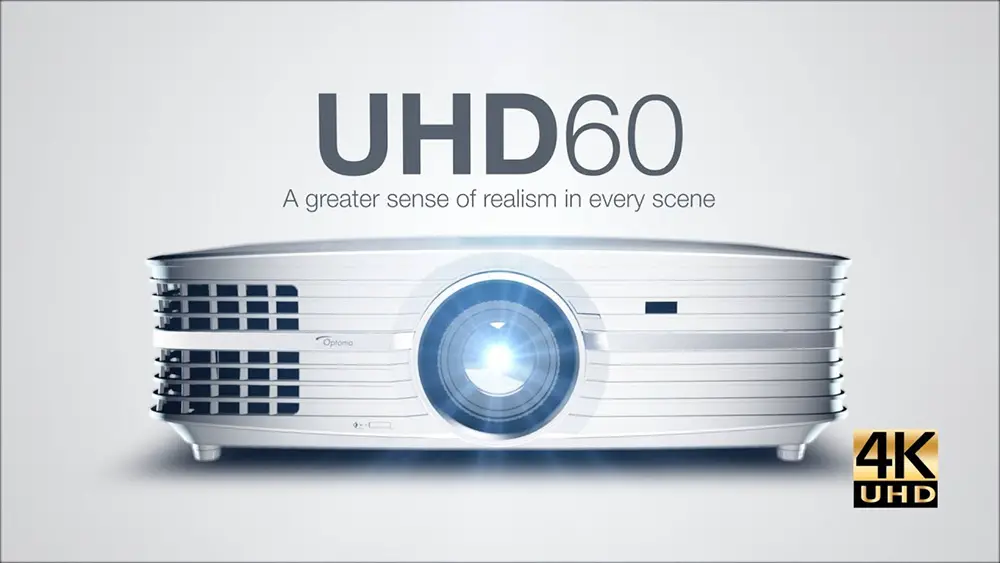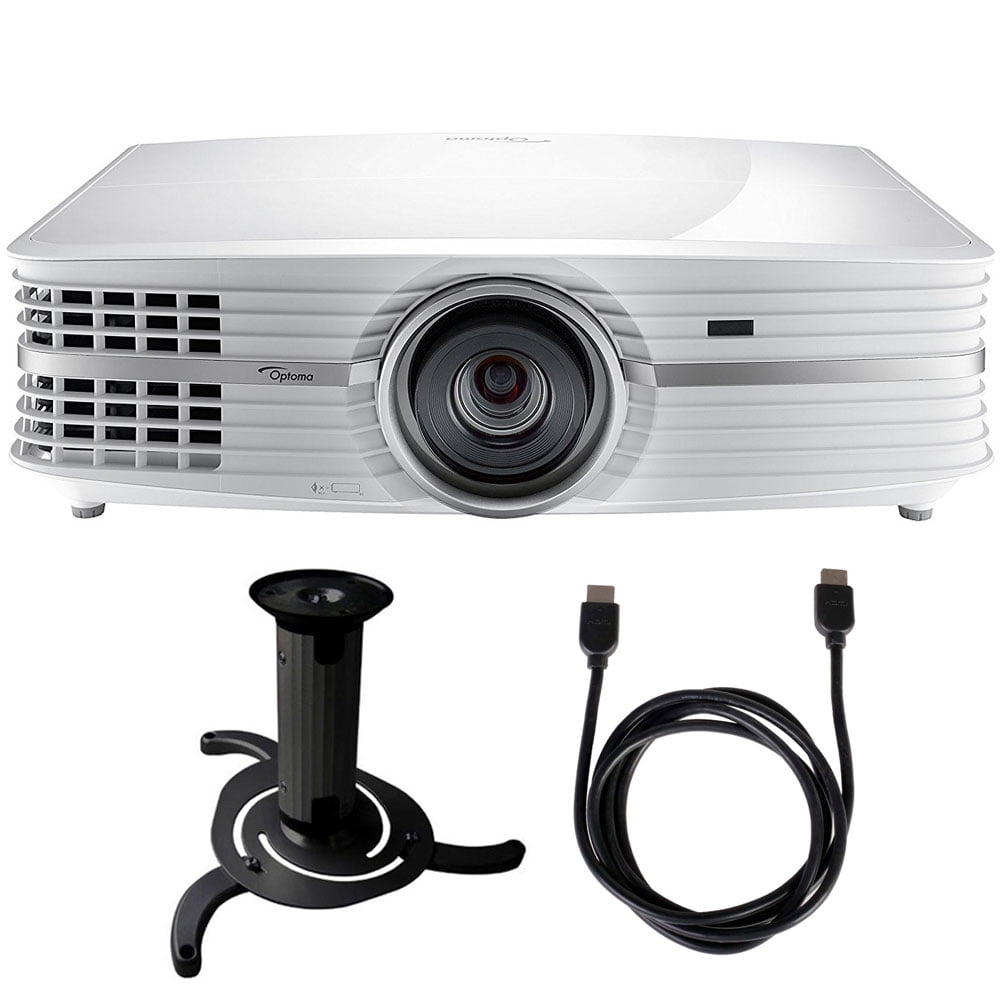

But the two HDMI ports on the UHD50X are 2.0 and 1.4, so 4K/120 will never be in the cards on this projector. (Right now the only way to do a high refresh rate at 4K is with two DisplayPort cables used at the same time for enough throughput.)Įxpectation is that the next-gen Microsoft and Sony consoles will come with HDMI 2.1 and support high refresh rates in 4K (probably 120Hz).
#Optoma 4k projector uhd60 full#
So even if you have a computer powerful enough to run a game at the projector's full 4K resolution and high refresh rate-which takes a lot of power and, with current hardware costs, money-the projector will be limited to 60Hz. This limitation is imposed by the HDMI 2.0 spec and not unique to the UHD50X.

In our 1080p/60 test, we measured 24.7ms so it's reasonable to assume the 120Hz and 240Hz numbers Optoma publishes are accurate.Īs stated, the image resolution for either 120Hz or 240Hz is limited to 1080p. Nonetheless, each increase in the refresh rate comes with a reduction in input lag. And right now, that's restricted only to the Xbox One.
#Optoma 4k projector uhd60 1080p#
The 240Hz playback will only be accessible from a computer and at 1080p resolution, but that's not surprising considered that the maximum refresh rate supported by any console is 120Hz-also limited to 1080p.

But before you start up your Xbox or PlayStation there's a bit to know first. FeaturesĮasily the most anticipated feature of the Optoma UHD50X is its high refresh rate that can be enabled by turning on Enhanced Gaming Mode. Are these benefits realized with the UHD50X? And is it just a gaming projector or will it serve well as a home theater projector as well? Let's take a look and find out. Now the Optoma UHD50X has taken it a step further as the "world's first 240Hz cinema gaming projector." The benefits of a high refresh rate display are two fold for gamers: a possible reduction of input lag and better motion smoothing. But in the past few years, there's been an influx of low-input-lag projectors aimed at those of us who game that are becoming viable alternatives to TVs. Projectors were generally burdened with painfully slow input lag that caused playing a game to be exceedingly frustrating. Input lag is suitably low for all but the pickiest of gamers and it performs well as a multipurpose home theater projector in ambient light and dark room environments.įor decades, anyone who considered themselves a gamer was limited to a panel display-in the form of either a television or a computer monitor.


 0 kommentar(er)
0 kommentar(er)
